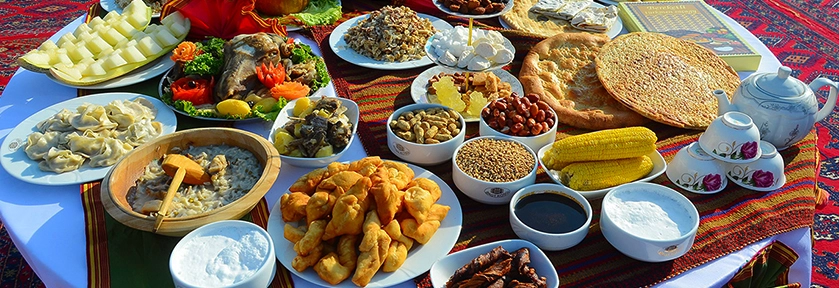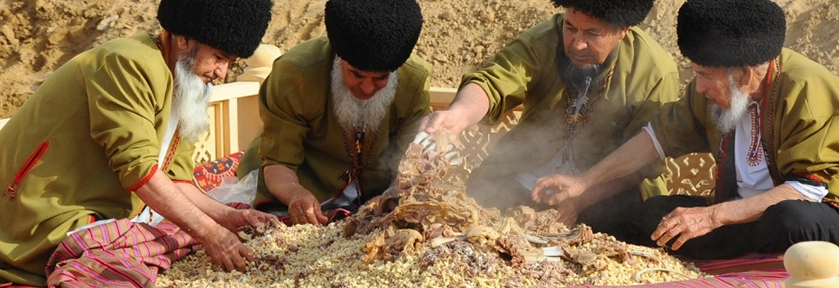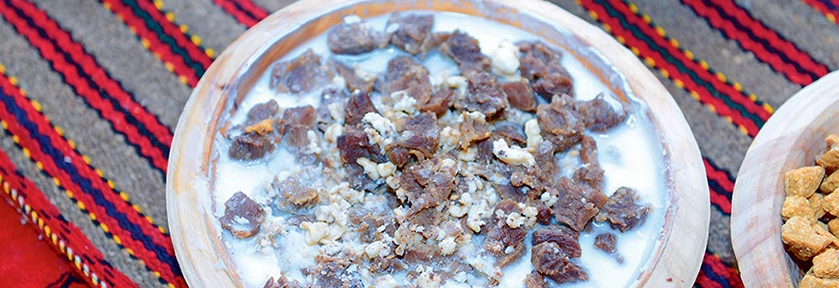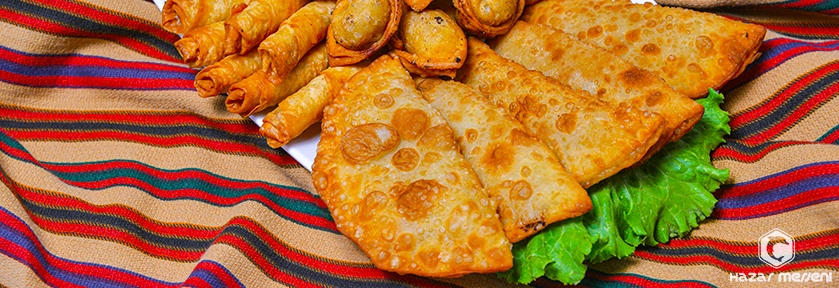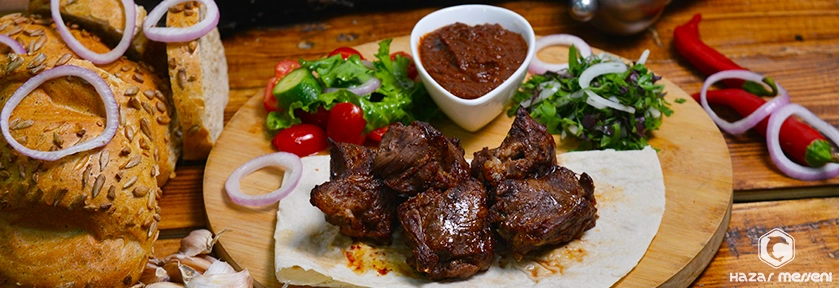Turkmenistan cuisine prides itself on highlighting the natural flavors of its ingredients without relying heavily on herbs and spices. There is a variety of meat options available, including lamb, chicken, hares, gazelle, deer, camel, ptarmigans, and wild birds. However, it's important to note that the consumption of horsemeat is strictly prohibited in honor of horses, which are considered sacred animals. The Akhal-Teke breed, with its distinctive metallic-looking coat, is symbolic of Turkmenistan's national emblem.
Top 10 must-try dishes from Turkmenistan's national cuisine
Turkmenistan's meat dishes have similarities to those in other Central Asian and Caspian countries, but what sets them apart are the unique cooking techniques used. For visitors to Turkmenistan, there are top 10 "must-try" dishes that showcase the country's cuisine.
Pilaf
Pilaf, also known as "ash," is a beloved dish in Turkmen cuisine. It is made with rice and meat, typically lamb, which is seasoned with spices and sometimes dried fruit. The meat is roasted with onions and carrots, and then simmered with the rice until it turns a vibrant yellow color. Pilaf takes center stage at celebration feasts and is traditionally savored by hand.
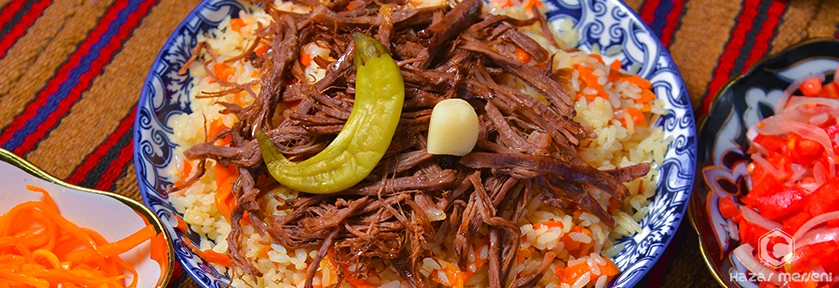
Dograma
Dograma is a unique Turkmen national dish that is traditionally prepared for special religious occasions. Its name means "to cut into pieces," which is significant to its history intertwined with sacrificial rituals and rites. To make dograma, multiple flatbreads are baked in a clay oven and fresh mutton is boiled until tender in a large cauldron. The bread is then torn into small pieces and combined with sliced onion and shredded meat, served in a bowl and drenched in hot broth.
Ichlekli
Ichlekli, also known as Turkmen Meat Pie, is a national dish that originates from Turkmen cuisine. It is a practical and delicious dish that embodies the essence of Turkmenistan's nomadic culture and challenging desert environment. The unique method of cooking using sun and sand, combined with non-perishable ingredients, represents the ingenuity of the Turkmen people and their ability to adapt to their environment. While ichlekli is commonly baked in the oven nowadays, the traditional technique is still preserved in some regions.
Kovurma
Turkmen nomads have developed numerous ways to preserve meat, and one of them is called kovurma. This involves cutting meat into small pieces and frying them in animal fat. Kovurma is known for its delicious taste and can be either hot or cold.
Kakmach
Kakmach is a traditional Turkmen dish made from air-dried or sun-dried beef or lamb. The meat is sliced into thin strips and hung on high poles to dry for several days until it becomes firm and dry. This preservation method is crucial in Turkmenistan due to its harsh climate with high temperatures and hot winds. Kakmach is a rich source of protein and can be enjoyed on its own as a snack or used as an ingredient in various Turkmen dishes. It is a testament to the resourcefulness of Turkmen cuisine in adapting to the region's challenging climatic conditions and is an essential part of their culinary heritage.
Kazanlama
Kazanlama is a dish with ancient origins, traditionally made by shepherds using saxaul (traditional Turkmen firewood), a desert bush also used for shashlik. The lamb meat is marinated with salt, garlic, and paprika and then placed directly on hot coals. A large cauldron is buried in slightly wet sand and the lamb is covered and left to cook for about an hour. The result is delicious, golden chunks of succulent lamb. While a challenging dish to prepare, kazanlama is worth the effort.
Gutap
Gutap is a type of flatbread that is shaped like a half-moon and typically filled with beef or lamb, and onions. Gutap is cooked in a pan and traditionally eaten by hand. Turkmen gutap offers several stuffing variations, including meat, potatoes, spinach, or pumpkin.
Shurpa
Shurpa is a popular soup in Turkmenistan and Central Asia. It is made from mutton broth, potatoes, and tomatoes. Boiled vegetables are combined with fried onions, carrots, flour, bay leaves, salt, and pepper to create a flavorful broth and vegetable mixture. The soup is served with boiled mutton and a spoonful of sour cream.
Shashlyk
Shashlyk is a well-known dish in Turkic countries, but in Turkmenistan, it has a distinct character. The dish consists of skewered pieces of meat, usually lamb, grilled over an open fire fueled by haloxylon, a tree-like shrub found in the Karakum Desert. This imparts a unique flavor to the meat, making it a special addition to Turkmen cuisine.
Chorek
Chorek is a type of flatbread that holds great significance in Turkmen culture. It is made in a clay oven called a tamdyr and is highly respected in households. Tradition dictates that stepping on a piece of bread is forbidden, and chorek should not be casually broken with one hand. Instead, it should be torn apart with both hands. It is also strictly prohibited to turn a piece of chorek face-down or throw it away. The saying "Bread is the head for everything" reflects the importance of chorek in Turkmen society.

